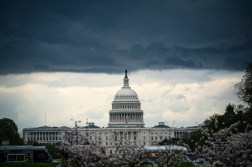Federal shutdown has minimal effect on health insurance exchange rollout

Oct. 1, 2013, has long been a day circled on the calendar of state technology executives, as states were required to have their health insurance exchanges ready to accept patients for open enrollment as part of the Affordable Care Act.
But now with the federal government shuttering its doors as congressional leaders argue over the funding of the same act, there are questions about how the federal government’s closure would affect the rollout.
The answer?
“My understanding is it won’t,” Jon Hager, the executive director of the Silver State Health Insurance Exchange in Nevada, said Tuesday on a conference call with reporters. “The government shutdown will not affect the exchange as long as it’s a short-term shutdown. If there is any kind of long-term shutdown — and I don’t know how long that would be — it could affect the exchange, but right now we have the funds we need to operate.”
The health insurance exchanges were a key part of the ACA as states were able to design a portal that provided health insurance options to their residents in a way that best suit them.
While some states, such as Nevada, Oregon and Florida, decided to create their own exchanges, either building from scratch or hiring an experienced vendor, more than 30 states chose to let the federal government run theirs in house.
Coverage offered through the Marketplace includes a range of options so consumers can pick a plan that best meets their needs, the needs of their family, and their budget.
With one Marketplace application, consumers will be able to see if they qualify for lower costs on health insurance based on income or free or low-cost coverage available through Medicaid or the Children’s Health Insurance Program. No matter what state a consumer lives in, he or she will be able to use the Marketplace to apply for coverage, compare options and enroll.
Data released by the Department of Health and Human Services last week shows consumers will be able to choose from an average of 53 health plans in the federally-facilitated Marketplace, and the vast majority will have a choice of at least two different health insurance companies — usually more. Premiums nationwide will also be around 16 percent lower than originally expected — with about 95 percent of eligible uninsured living in states with lower than expected premiums — before taking into account financial assistance.
Nearly six in 10 uninsured Americans could get insurance for $100 or less, with financial assistance and expanded access to Medicaid.
“For years, the financial, physical or mental health of millions of Americans suffered because they couldn’t afford the care they or their family needed,” said HHS Secretary Kathleen Sebelius. “But thanks to the health care law, all of that is changing. Today’s launch begins a new day when health care coverage will be more accessible and affordable than ever before.”
The reason the exchanges were able to roll out this morning despite the shutdown is because of the funding of the ACA and the power granted to HHS, even though the federal government is itself running such a large part of the exchanges.
A large part of the ACA is not tied to annual spending bills, and much of the health law falls under the denotation of mandatory spending, making it exempt from the annual appropriations battle going on in Congress right now.
Because the programs are mandatory, HHS has the power to make many of the decisions inside the ACA, including the rollout of the insurance exchanges. The department, in posting its shutdown contingency plan last week, said things will carry on as planned.
“The Affordable Care Act is well insulated from annual appropriations and the implications from an appropriations lapse,” said Gordon Gray, director of fiscal policy for the American Action Forum, who added in a blog post that the federal man hours needed to implement the ACA may not fall under those being furloughed.
What is likely to happen is the exchanges will be able to operate under the funds allocated to them during the ACA’s initial funding to make it through a federal government shutdown.
After all, the exchanges are expected to be self-sustaining, within two years.
Peter Lee, executive director of Covered California, the state’s insurance marketplace, said in a press briefing last week the biggest hurdle may come if the government shutdown knocks a federal data hub offline that is needed to verify whether a customer is eligible for Medicaid of subsidies through the program.
All that would do, though, is require states to enroll people on a provisional basis and confirm it later using the federal government’s data.
Lee anticipates people will be slow to sign up. He doesn’t expect a deluge on the first, but instead people will start to explore the public and private marketplaces, consider their options and take their time. Eventually, he predicts, between 800,000 and 1.3 million Californians will use the state’s exchange to buy their coverage.






